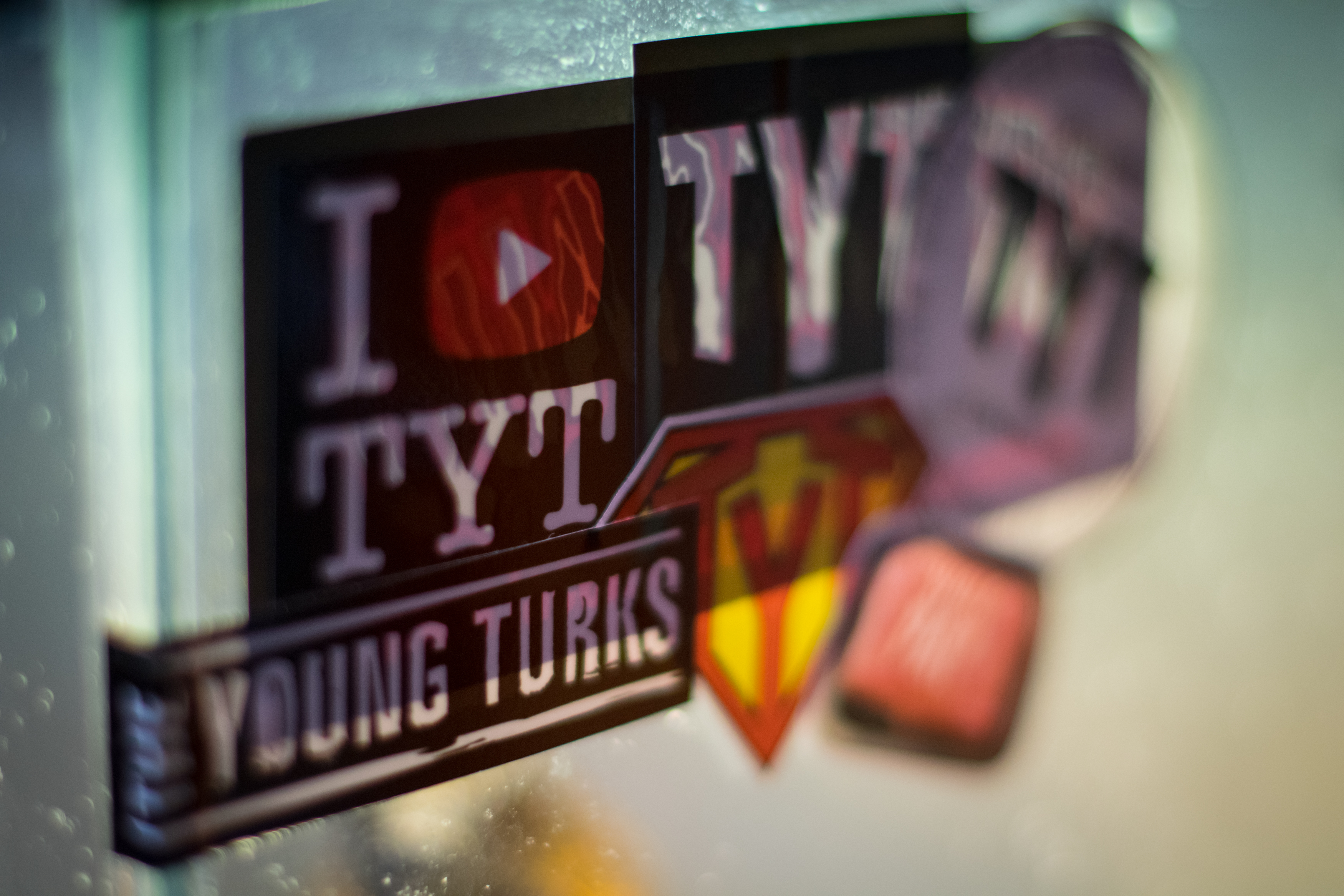Millennial-focused news network The Young Turks has come a long way since its founders went live on YouTube with their very first broadcast on Dec. 12, 2005.
In those days, hosts Cenk Uygur (pictured), Ben Mankiewicz, and Jill Pike wore giant headphones and sat behind radio mics that obscured their faces as they debated trending and timely issues of the day in a decidedly non-traditional format from a make-shift studio on L.A.’s Wilshire Boulevard.
YouTube itself was still just a curious social experiment. Indeed, the Google-owned platform had yet to be scooped up into the Google empire.
But Uygur, who 10 years on still fronts the TYT brand, saw something in the digital airwaves that many had yet to recognize.
“TV (networks) were bragging about being in 80 or 100 million homes and I thought, ‘I don’t get it. The computer is in every home, so why wouldn’t (viewers) watch online?’,” Uygur told StreamDaily.
“Of course, it turns out they would. It just took a little getting used to,” he said.
These days, TYT has swelled to 55 people — mainly writers, researchers, editors and production crew. Following a successful crowdfunding campaign in 2013, the network now operates from a sleek, 6,000 sq.ft. digital studio in Culver City, Calif., complete with all the necessary mod-cons (not to mention a centralized bar.)
It’s from here they continue to live-stream news of the day to a global audience of 2.4 million on their flagship TYT channel. (By comparison, it’s closest competitor, Vice News, reaches about 1.7 million subscribers on its main YouTube channel). The TYT network, which secured $4 million in a 2014 funding round led by the Roemer Group, also now includes partner channels spanning politics, economics, sports, pop culture, social trends and lifestyle, which, together, drive an estimated 150 million views per month and reach a total of five million fans worldwide, most (70%) in the millennial demo. The network also has a strong following on Facebook and Twitter and is considered the largest news-focused digital network in the world.
The Culver City studio will also host the TYT 10th anniversary on Friday Dec. 11 (one day earlier to catch the week-day traffic). Along with the de rigeur birthday cake and party favors, the network is planning a 10-hour live stream, with current hosts, including Uygur and Ana Kasparian, joined by former TYT staffers such as Pike (who left the brand to pursue a career in Washington, D.C.), Michael Shure and even superfans like Bob Freeman, the man who signed on as TYT’s very first YouTube subscriber.
Uygur can’t wait to pop the champagne and toast to a decade of hard-earned success going upagainst traditional media players with bigger names and deeper pockets.
“I’m super proud of our brand,” he said. “I think people know what TYT stands for, and that’s honesty in news coverage…that’s why I am not overly concerned about vague brands from the old media. People don’t know what they stand for. Like, what does CNN stand for? I don’t know.”
Reflecting on the early days, Uygur said TYT had much to learn in terms of how to produce a quality show, and find the right audience. The show had started a few years earlier as a radio broadcast from Uygur’s one-bedroom apartment on Sunset Blvd then, with funding from Sirius, from ‘the smallest two-room office you’ve ever seen in your life,” said Uygur.
He later turned down a second investment offer by Sirius, which, he said, wanted to keep the show exclusively on radio. The deal conflicted with Uygur’s own plans to move it to YouTube.
Instead, working on a budget of less than $1 million (raised mainly through family and friends), the founding team learned the digital ropes the hard way — from finding the right kind of desk to deliver their broadcasts to labeling posted content in a way that viewers could discover it. Of the latter lesson, Uygur said initial efforts to upload content under the TYT brand failed because people didn’t yet know the brand. They quickly shifted to labeling videos by content – ie/ “Dick Cheney shoots friend in face.”
“They started watching it more that way,” said Uygur.
From the start, though, the chemistry was right: “We didn’t have an ego. We didn’t think we had everything figured out. We said, ‘Let’s test it,’” said Uygur of the attitude.
Audience feedback proved equally vital to helping the brand evolve, with viewers acting as de facto editors, directors, and producers through their feedback.
“In that sense, they were part of our production crew that made our show better and better, day by day, week by week. And, now, it’s 10 years later,” said Uygur.
Among the most noticeable changes is the air of maturity that has crept into the broadcasts.
“Back in the day, we didn’t mind goofing around more — taking on topics that were a little on the edge or riské… In the past, we might have talked about if a woman in the news was hot or not,” said Uygur.
“Now, we ask ourselves, ‘How will that affect people in the audience?’ And it just gives us a little bit more weighty responsibility in terms of making sure we are not alienating people.”
That doesn’t mean the conversations on air are boring or careful.
That will never change, said Uygur. It’s that millennial-winning attitude, combined with the rise in technology, that has built the TYT brand into what it is today, and why Uygur believes the next 10 years look so promising: “TV has no chance of competing with us. We’ve already won. They just don’t know it yet.”

